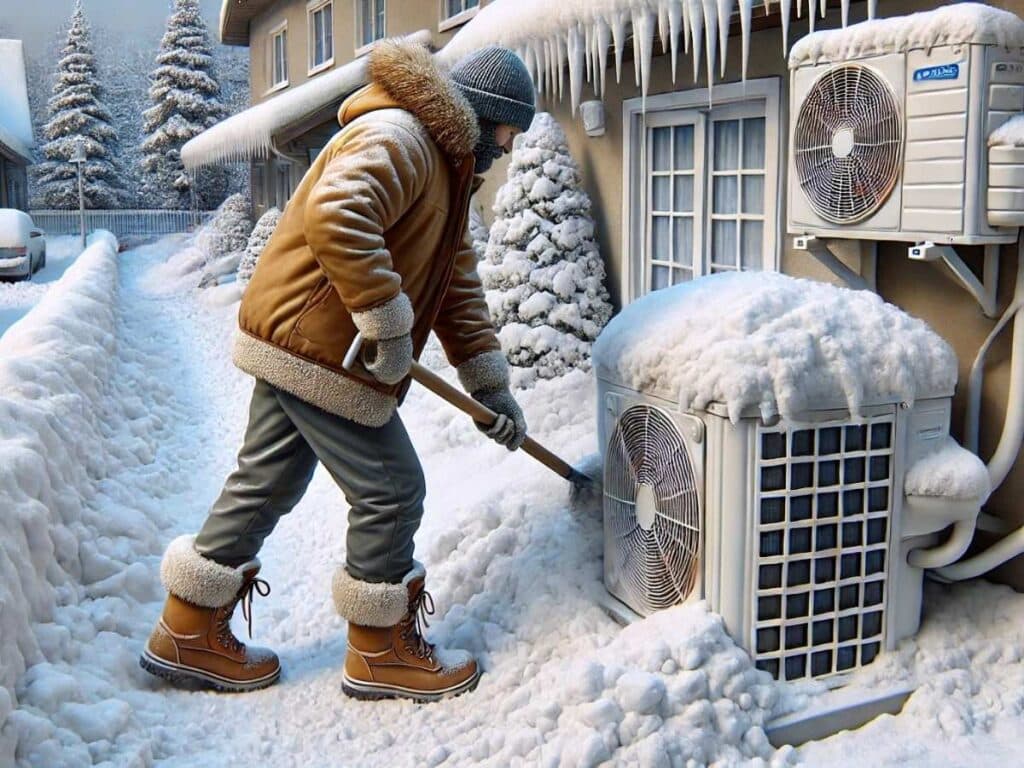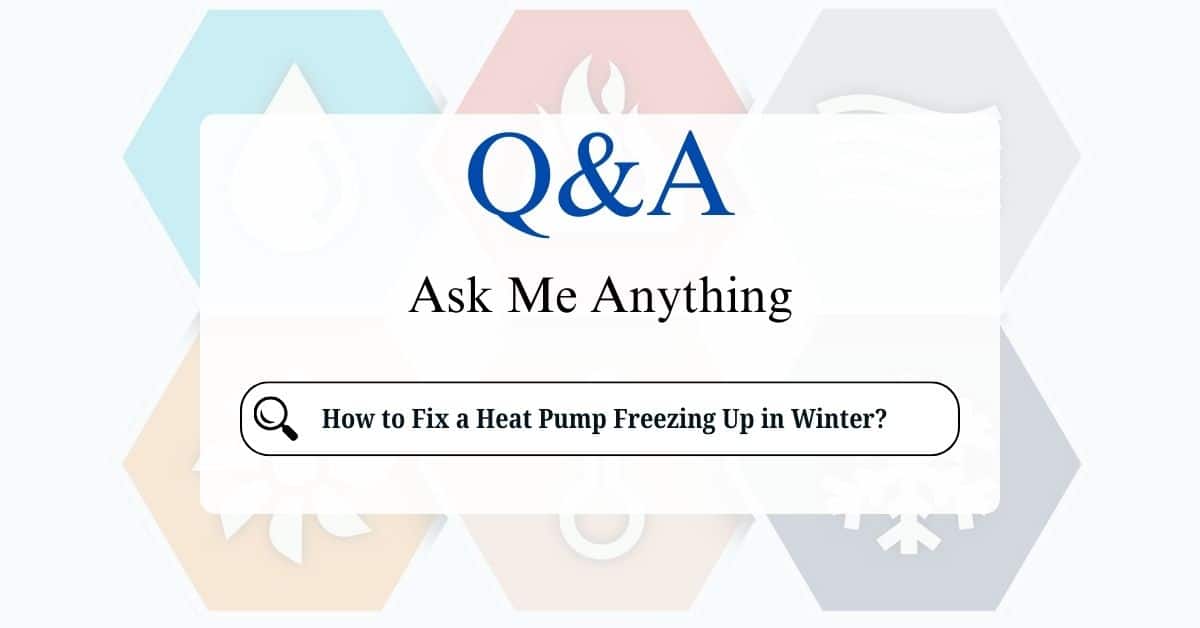Heat pumps are champions of efficient heating and cooling, but winter’s icy grip can sometimes cause them to freeze up. While a little frost is normal, excessive ice buildup can hamper performance and even damage your system. This friendly guide will explain why heat pumps freeze, how to fix, and, most importantly, how you can prevent and address freeze-up issues.
A heat pump freezing up in winter can be caused by several issues, including poor airflow, refrigerant problems, or a malfunctioning defrost system.
Here’s a step-by-step guide to identify and fix heat pump freezing up in winter:
1. Turn Off the Heat Pump
- Turn off the system at the thermostat and shut off power at the breaker for safety.
- Let the unit sit idle to avoid further damage.
2. Inspect the Airflow
- Check the Air Filter:
- A dirty or clogged air filter restricts airflow, causing the system to overwork and freeze.
- Replace or clean the air filter as needed.
- Clear Vents and Registers:
- Ensure all supply and return vents inside the home are open and unobstructed.
- Inspect the Outdoor Unit:
- Remove debris, leaves, snow, or ice from around the outdoor unit to improve airflow.
3. Check the Outdoor Unit for Ice Buildup
- Inspect the Coils:
- Look for ice accumulation on the evaporator coils.
- Clear Ice Safely:
- Pour warm (not hot) water over the coils to melt the ice.
- Do not use sharp objects to chip away the ice, as this can damage the fins or coils.
4. Test the Defrost Cycle
- Observe the Defrost Function:
- Heat pumps have an automatic defrost cycle to remove ice from the outdoor coils.
- During defrost, the outdoor fan should stop, and the system switches to cooling mode to heat the coils and melt the ice.
- Manually Trigger Defrost:
- Locate the defrost control board in the outdoor unit and press the defrost test button (refer to your unit’s manual).
- If the defrost system doesn’t activate, the control board, defrost sensor, or reversing valve may be faulty.
5. Check Refrigerant Levels
- Low Refrigerant Levels:
- Insufficient refrigerant can reduce heat transfer, causing the coils to freeze.
- Signs of low refrigerant include poor heating performance or ice buildup.
- Only a licensed HVAC technician can check and recharge refrigerant safely and legally.
6. Inspect the Drainage
- Blocked Drain Lines:
- Ensure the condensate drain line is clear to prevent water from pooling and freezing.
- Use a wet/dry vacuum or flush the line with warm water and vinegar to clear blockages.
7. Ensure Proper Installation
- Unit Positioning:
- The outdoor unit should be elevated to prevent snow from accumulating around the base.
- Ensure the unit is level to allow proper drainage.
- Wind Protection:
- Install a windbreak, such as fencing or shrubs, to shield the unit from cold winds that can exacerbate freezing.
When to Call a Professional
- The defrost cycle fails to activate, and manual attempts don’t work.
- Refrigerant levels are low, or you suspect a leak.
- The compressor, reversing valve, or other critical components show signs of malfunction.
How to Prevent Excessive Heat Pump Freeze-Up

Prevention is key! Here are the most effective ways to prevent excessive ice buildup:
- Ensure Unrestricted Airflow Around the Outdoor Unit: This is the most crucial step.
- Clear Snow and Ice Regularly: Remove snow and ice from around the unit, maintaining at least 18-24 inches of clearance on all sides.
- Trim Back Vegetation: Trim any bushes, shrubs, or other plants growing near the unit.
- Remove Debris: Remove any leaves, branches, or other debris that have accumulated on or around the unit.
- Maintain Clean Air Filters: Dirty air filters restrict airflow, reducing efficiency and contributing to coil icing. Replace your filters every 1-3 months, or more frequently if you have pets or allergies.
- Ensure Proper Drainage Away From the Unit: The ground around the outdoor unit should slope away from it to allow melting snow and ice to drain properly. This prevents water from pooling and refreezing.
- Consider a Heat Pump Stand or Pad: If your unit is in an area prone to heavy snow or poor drainage, raising it on a stand or concrete pad can help.
- Monitor for Excessive Frost/Ice: While some frost is normal, keep an eye out for thick layers of ice that don’t melt during the defrost cycle.
- Use a Heat Pump Cover (Correctly): Completely covering the unit is not recommended. Use a specially designed cover that only protects the top to prevent snow accumulation on the fan grill while allowing airflow.
- Schedule Annual Professional Maintenance: A yearly tune-up by a qualified HVAC technician is essential. They can:
- Check refrigerant levels and pressures.
- Clean the coils and other components.
- Inspect electrical connections.
- Ensure the defrost cycle is working correctly.
- Identify and address potential problems early on.
By following these prevention and troubleshooting tips, you can minimize freeze-up issues and keep your heat pump running smoothly all winter long. Remember, regular maintenance and prompt attention to any problems are key to preventing costly repairs and ensuring long-lasting performance. If you’re ever unsure or uncomfortable, contacting a qualified HVAC professional is always the best course of action.






